Search Results for 'Mercy School'
19 results found.
Renmore Barracks, a brief history
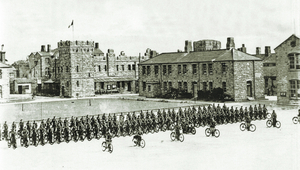
Because of its strategic location, Galway was always an important centre for the military. The original fort in Renmore was known as St Augustine’s Fort and featured prominently in the 1641 rebellion, after which it was abandoned, the purpose for which it had been built having been accomplished.
Sparks Rugby Football Club
The Connacht Junior Cup was donated by a man called Senior. He was Alfred Senior, professor of chemistry in UCG from 1891 to 1918. The cup was first played for in 1905, and as Ralph O’Gorman says in his wonderful book entitled Rugby in Connacht, the event always had a unique culture, it was competitive and unpredictable, and had a wide geographical spread of participating clubs.
The head of the river
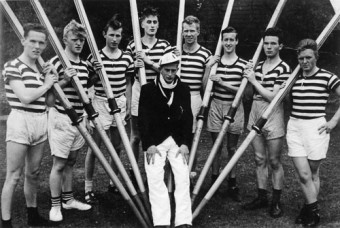
Rowing is a sport of endurance, strength, and finesse, a sport naturally suited to Galway where the river connects Lough Corrib with the sea. The earliest reference we have to competitive rowing on the Galway river is 1839. The first rowing club established here was the Corrib Rowing and Yachting Club in 1864 (149 years ago!) and as other clubs formed, rowing matches became more competitive. In 1868, Commercial Rowing Club was formed and the inter-club rivalry generated a lot of interest in the sport.
Courthouse Square c.1890
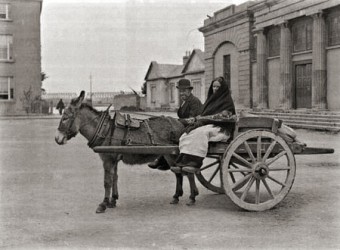
This interesting aspect of Courthouse Square shows the Town Hall on the left and The Convent of Mercy National School in the distance. The Mercy Sisters arrived in Galway in 1840 to a house in Lombard Street. The following year they bought JoycesDistillery and Mill house and stores on St. Stephen’s Island together with the excellent dwelling house and offices in which Mrs. Joyce resided. They converted these and opened a school there and called it St. Vincent’s Academy. They were very busy during the Famine and ran three soup kitchens, one in St. Vincent’s, one in Bohermore and one in Bushypark.
Courthouse Square, c1890
This interesting aspect of Courthouse Square shows the Town Hall on the left and the Convent of Mercy National School in the distance. The Mercy Sisters arrived in Galway in 1840 to a house in Lombard Street. The following year they bought Joyce’s Distillery and Mill house and stores on St Stephen’s Island together with the excellent dwelling house and offices in which Mrs Joyce resided. They converted these and opened a school there and called it St Vincent’s Academy. They were very busy during the Famine and ran three soup kitchens, one in St Vincent’s, one in Bohermore, and one in Bushypark.
Eugene Daly, survivor of the Titanic
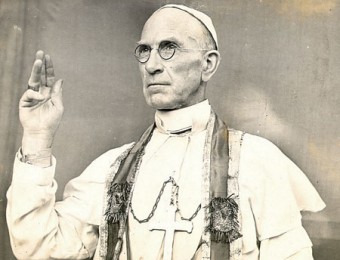
Eugene Daly was a 29-year-old weaver in Athlone Woollen Mills who decided to leave his job and go to America. He paid £6-19 for a third class ticket and boarded the Titanic at Queenstown. He was a piper and played native airs on board the tender on the way out to the liner. One of the survivors later sourly noted, “Looking astern from the boat deck, I often noticed how the third-class passengers were enjoying every minute of the time, a most uproarious skipping game of the mixed double was the great favourite whilst “in and out and roundabout” went a man with his bagpipes playing something that ‘faintly’ resembled an air.”
Public lecture on the Franciscans in Galway
The Old Galway Society will hold a public meeting on the history of the Franciscans in Galway city next week.
Athletics in St Mary’s College
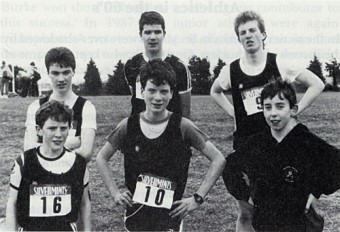
St Mary’s opened in 1912 with 60 boarders and 17 day boys. The first school sports there took place in 1928, and since then the college has produced many fine athletes in track and field. The first mention of All-Ireland sports in the annals of the school concerns Tom Fahy, who in 1938 set a new Irish record for the 12lb shot. In 1939 the school won its first Connacht Schools title; in 1943, it won three titles, four in 1946, and five in 1947. In that last year, one athlete, Martin Kilmartin, won three golds, and set records in both the triple jump and the long jump. In 1948 the college again won five titles, and in 1950 John Linnane set a new Irish record in the pole vault.
Michael Cloherty’s new premises, 36 Shop Street, 1902
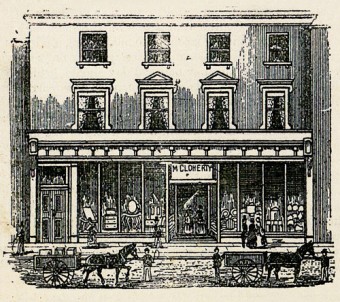
“Opening of New premises. Michael Cloherty, ironmonger and seedsman begs to inform his numerous customers and the public in general, that owing to his premises in Williamsgate Street having been burnt down, and being desirous of meeting the requirements of his Patrons, he has purchased the extensive premises owned by his brother, Mr Henry Cloherty, and known as 36, Shop Street, Galway, which he has stocked with an extensive Supply of all descriptions of Goods suitable to his Trade, so that those who patronised him in the past may not suffer any inconvenience in obtaining whatever class of goods they may require, in keeping with the business carried on in his late establishment.
The Vincent de Paul Society, Galway’s oldest charity?
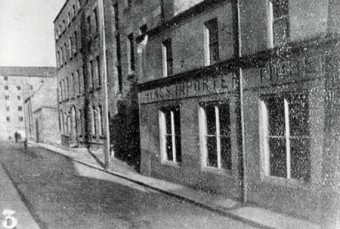
Today’s photograph was taken about 100 years ago and shows part of St Augustine Street. In the foreground is Hynes’ retail shop. Hynes’ were major importers and had a yard and warehouse on the docks, so they could unload imported cargo directly from the ship across the street into the yard. The shop sold all kinds of hardware and builder’s materials. The shop has gone now and is replaced by what is known as the Hynes Building which houses the County Library and various offices.

